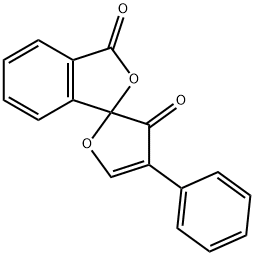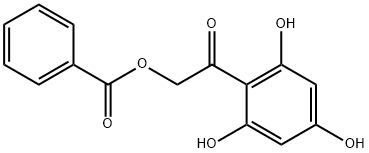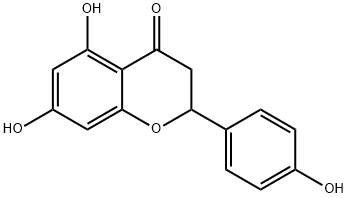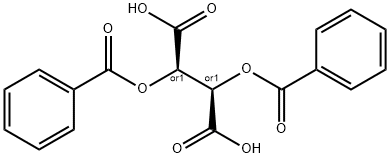BENZYLOXYACETALDEHYDE
- CAS NO.:60656-87-3
- Empirical Formula: C9H10O2
- Molecular Weight: 150.17
- MDL number: MFCD00191779
- EINECS: 262-349-7
- SAFETY DATA SHEET (SDS)
- Update Date: 2023-06-08 17:06:38

What is BENZYLOXYACETALDEHYDE?
Chemical properties
Pale Yellow Oil
The Uses of BENZYLOXYACETALDEHYDE
Benzyloxyacetaldehyde may be used in the following syntheses:
- (3S,5S)-methyl 6-benzyloxy-3,5-dihydroxyhexanoate
- (S)-5-benzyloxy-4-hydroxypentan-2-one
- myxothiazols
The Uses of BENZYLOXYACETALDEHYDE
Acceptor; engineering of 2-deoxyribose 5-phosphate aldolase variants for enzymic preparation of -ketols
The Uses of BENZYLOXYACETALDEHYDE
Acceptor; engineering of 2-deoxyribose 5-phosphate aldolase variants for enzymic preparation of β-ketols
What are the applications of Application
2-(Benzyloxy)acetaldehyde is an acceptor
General Description
Benzyloxyacetaldehyde is a non-natural aldehyde. It undergoes enantioselective Mukaiyama aldol reaction with silylketene acetal nucleophiles in the presence of C2-symmetric bis(oxazolinyl)pyridine Cu(II) complex (catalyst).
Properties of BENZYLOXYACETALDEHYDE
| Boiling point: | 118-120 °C/13 mmHg (lit.) |
| Density | 1.069 g/mL at 25 °C (lit.) |
| refractive index | n |
| Flash point: | >230 °F |
| storage temp. | Inert atmosphere,Store in freezer, under -20°C |
| solubility | Chloroform, Ethyl Acetate |
| form | Oil |
| color | Clear Colourless |
| Specific Gravity | 1.069 |
| Stability: | Temperature, Moisture Sensitive |
Safety information for BENZYLOXYACETALDEHYDE
| Signal word | Warning |
| Pictogram(s) |
 Exclamation Mark Irritant GHS07 |
| GHS Hazard Statements |
H315:Skin corrosion/irritation H319:Serious eye damage/eye irritation H335:Specific target organ toxicity, single exposure;Respiratory tract irritation H412:Hazardous to the aquatic environment, long-term hazard |
| Precautionary Statement Codes |
P261:Avoid breathing dust/fume/gas/mist/vapours/spray. P264:Wash hands thoroughly after handling. P264:Wash skin thouroughly after handling. P271:Use only outdoors or in a well-ventilated area. P273:Avoid release to the environment. P302+P352:IF ON SKIN: wash with plenty of soap and water. P305+P351+P338:IF IN EYES: Rinse cautiously with water for several minutes. Remove contact lenses, if present and easy to do. Continuerinsing. |
Computed Descriptors for BENZYLOXYACETALDEHYDE
| InChIKey | NFNOAHXEQXMCGT-UHFFFAOYSA-N |
BENZYLOXYACETALDEHYDE manufacturer
Dextro Organics
1Y
Phone:+91-8639914723
Whatsapp: +91-8639914723
product: 60656-87-3 Benzyloxy-acetaldehyde 98%
New Products
4-Fluorophenylacetic acid 4-Methylphenylacetic acid N-Boc-D-alaninol N-BOC-D/L-ALANINOL Tert-butyl bis(2-chloroethyl)carbamate 3-Morpholino-1-(4-nitrophenyl)-5,6-dihydropyridin- 2(1H)-one Furan-2,5-Dicarboxylic Acid Tropic acid S-2-CHLORO PROPIONIC ACID ETHYL ISOCYANOACETATE 2-Bromo-1,3-Bis(Dimethylamino)Trimethinium Hexafluorophosphate (6-METHYL-[1,3]DITHIOLO[4,5-b]QUINOXALIN-2-ONE INDAZOLE-3-CARBOXYLIC ACID 4-IODO BENZOIC ACID (2-Hydroxyphenyl)acetonitrile 4-Bromopyrazole 5,6-Dimethoxyindanone 2-(Cyanocyclohexyl)acetic acid 4-methoxy-3,5-dinitropyridine 2-aminopropyl benzoate hydrochloride 1-(4-(aminomethyl)benzyl)urea hydrochloride diethyl 2-(2-((tertbutoxycarbonyl)amino) ethyl)malonate tert-butyl 4- (ureidomethyl)benzylcarbamate Ethyl-2-chloro((4-methoxyphenyl)hydrazono)acetateRelated products of tetrahydrofuran








You may like
-
 60656-87-3 Benzyloxy-acetaldehyde 98%View Details
60656-87-3 Benzyloxy-acetaldehyde 98%View Details
60656-87-3 -
 (Benzyloxy)acetaldehyde (stabilized with Catechol) CAS 60656-87-3View Details
(Benzyloxy)acetaldehyde (stabilized with Catechol) CAS 60656-87-3View Details
60656-87-3 -
 Benzyloxyacetaldehyde CAS 60656-87-3View Details
Benzyloxyacetaldehyde CAS 60656-87-3View Details
60656-87-3 -
 1975-50-4 98%View Details
1975-50-4 98%View Details
1975-50-4 -
 2-HYDROXY BENZYL ALCOHOL 98%View Details
2-HYDROXY BENZYL ALCOHOL 98%View Details
90-01-7 -
 2-Chloro-1,3-Bis(Dimethylamino)Trimethinium Hexafluorophosphate 221615-75-4 98%View Details
2-Chloro-1,3-Bis(Dimethylamino)Trimethinium Hexafluorophosphate 221615-75-4 98%View Details
221615-75-4 -
 14714-50-2 (2-Hydroxyphenyl)acetonitrile 98+View Details
14714-50-2 (2-Hydroxyphenyl)acetonitrile 98+View Details
14714-50-2 -
 118753-70-1 98+View Details
118753-70-1 98+View Details
118753-70-1
Statement: All products displayed on this website are only used for non medical purposes such as industrial applications or scientific research, and cannot be used for clinical diagnosis or treatment of humans or animals. They are not medicinal or edible.